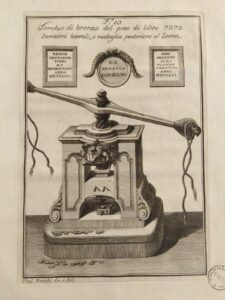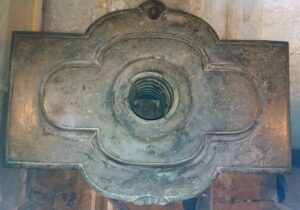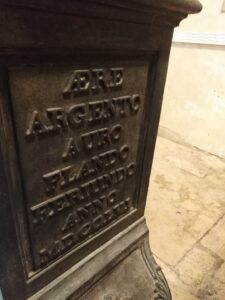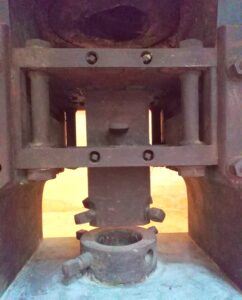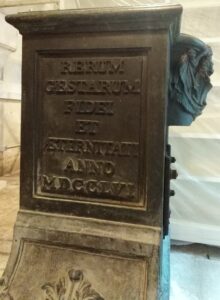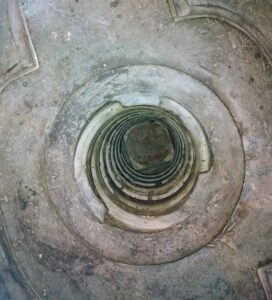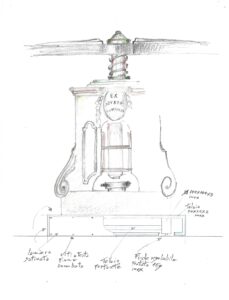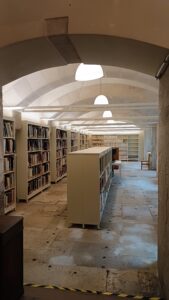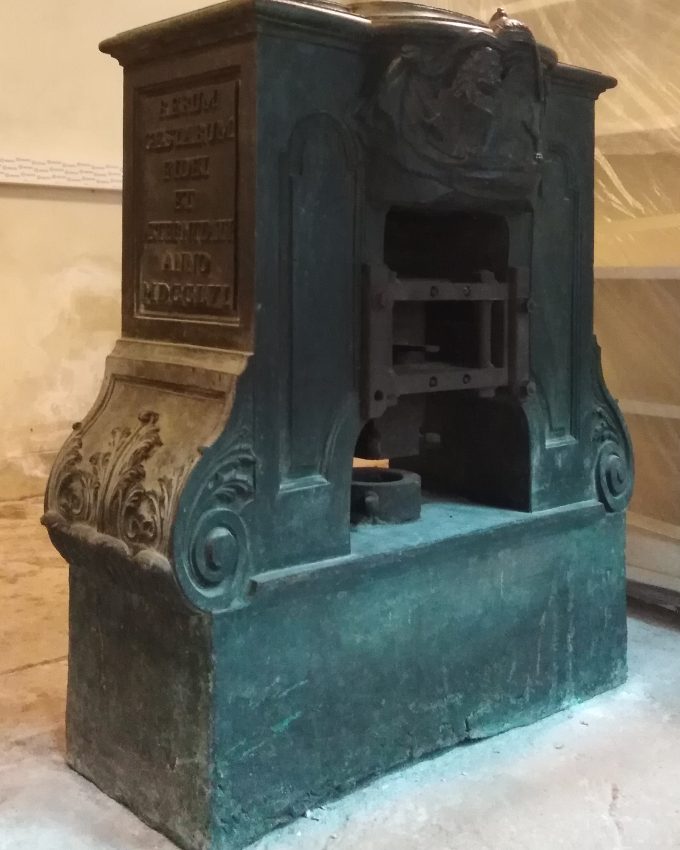
Michel Du Bois Chateleraut, Screw Press for production of medals (Torchio a bilanciere), 1756
Biblioteca Nazionale Marciana, Venice
Project:
Screw Press - Torchio a bilanciere
Location:
Biblioteca Nazionale Marciana
Conservator:
Alessandro Ervas
Start Date:
October 2025
End Date:
December 2025
Funding:
€12,500
Designed in 1756 by Michel Du Bois Chateleraut, the large bronze screw press (torchio a bilanciere) represents a nexus of art, technology, and history. It was made as one of a pair that marked the introduction of modern mechanised minting technology to Venice, replacing centuries of entirely hand-crafted coin and medal production. Today the torchio represents a unique in situ testament to the original function of Sansovino’s imposing Palazzo della Zecca – the Republic’s former Mint – which was later repurposed to house the Marciana Library’s reading rooms, storage facilities, and administrative offices.
The hefty screw press comprises three components: the main bronze body, a threaded screw mechanism (torchio), and a long rotating arm, the balance beam (bilanciere), which – when turned by two men – drove the screw downward to exert pressure for striking medals or coins. While the press was built for manufacturing precision, efficiency and durability, its bronze surfaces were richly embellished with inscriptions and emblems of the Venetian Republic in high relief, including the Doge’s corno and the winged Marcian lion.
This press was primarily used to strike oselle, ceremonial medals rather than everyday currency, minted mainly in silver. The osella originated from a curious tradition dating back to the late 12th century, when the Doge of Venice would gift five marshland gamebirds (osei) to the city’s patricians at New Year. Over time, this gift was replaced with a monetary equivalent, and beginning in 1521, a special coin was minted annually for the occasion. These coins, named oselle after the original bird gift, continued to be issued as ceremonial tokens until the fall of the Venetian Republic in 1797.
The designer of the press, Michel Du Bois Chateleraut, was a leading engineer in mint machinery. A French native, Du Bois had already worked extensively in Italy, successfully introducing modern equipment to the mint in Parma, and in 1755 he was invited by the Venetian Senate to do the same at the Zecca – despite resistance from a workforce still committed to traditional hand-crafted methods. Du Bois documented his work on the Venetian screw presses in an illustrated pamphlet, now held in the Marciana’s collections, which will be conserved as part of the present project.
Today, the bronze and iron parts of the screw press are affected by corrosion, structural instability and surface grime. The restoration will be undertaken by Alessandro Ervas, noted specialist conservator in historic metalwork, who will clean and conserve the weighty press in situ in the Sala del Bilanciere, in an open workshop, visible to the Library’s readership. The intervention will include the reconstruction of missing mechanical components, delicate cleaning with low-toxicity agents, and the application of protective coatings to stabilise the metal surfaces.
Once restored and securely mounted on a custom-built plinth, the press will be prominently displayed with carefully designed lighting and display signs. The new display will highlight the design and build of the press, as well as the story of Venice’s medal and coinage production in the original setting.
Venice in Peril Fund has committed to raising €12,500.


